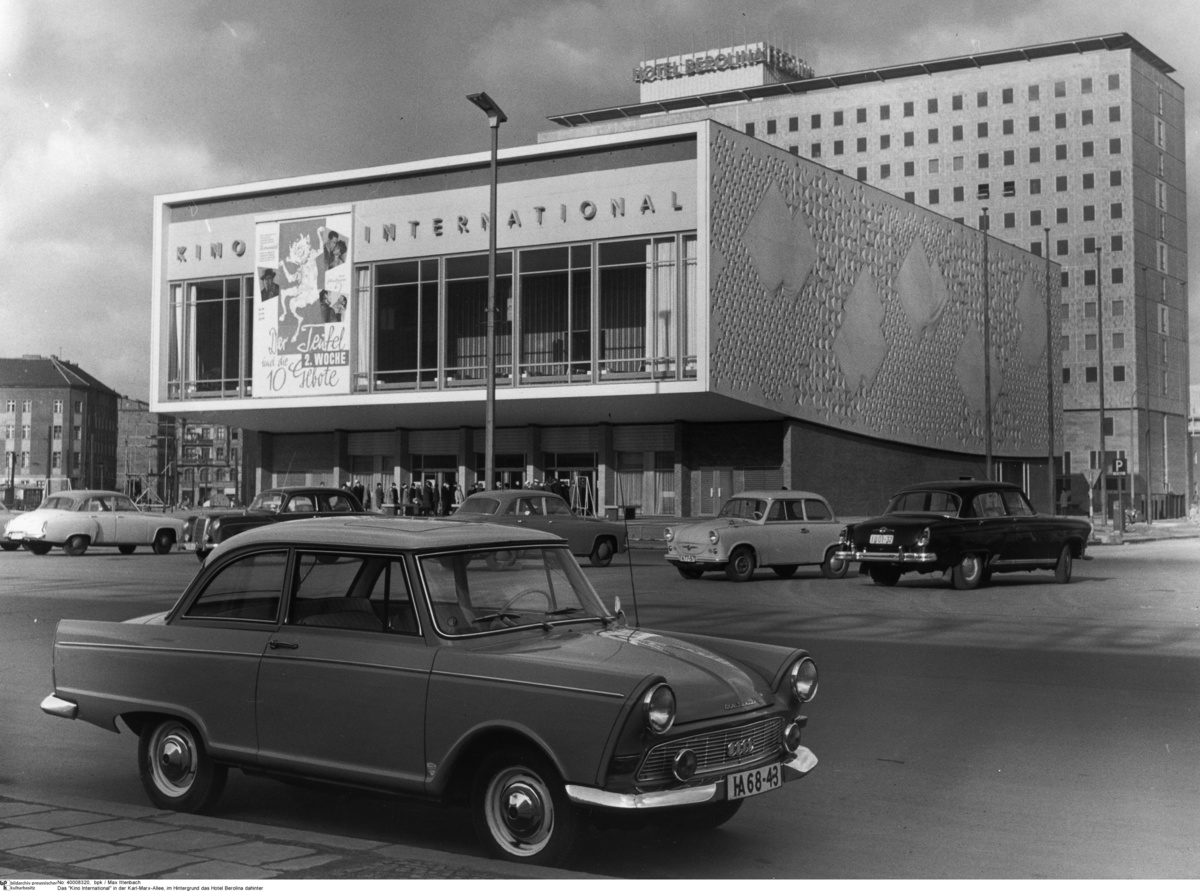Source

Source: The “Kino International” in Karl-Marx-Allee, in the background the Hotel Berolina. The film “Der Teufel und die Zehn Gebote” [“The Devil and the Ten Commandments”] is playing in the cinema. A DKW Junior de Luxe car can be seen in the foreground. Date: c. 1965. Photo: Max Ittenbach.
bpk-Bildagentur, image number 40008320. For rights inquiries, please contact Art Resource at requests@artres.com (North America) or bpk-Bildagentur at kontakt@bpk-bildagentur.de (for all other countries).